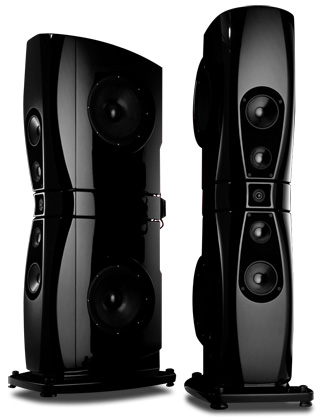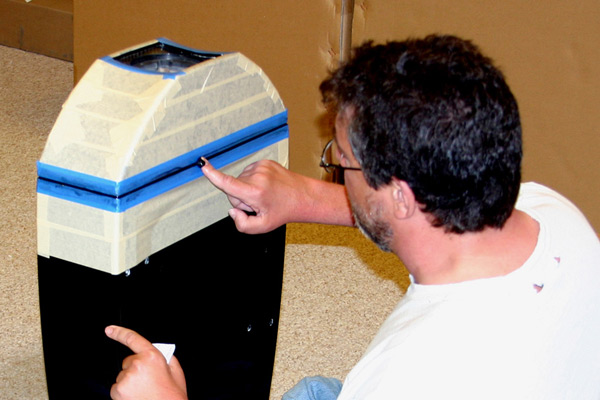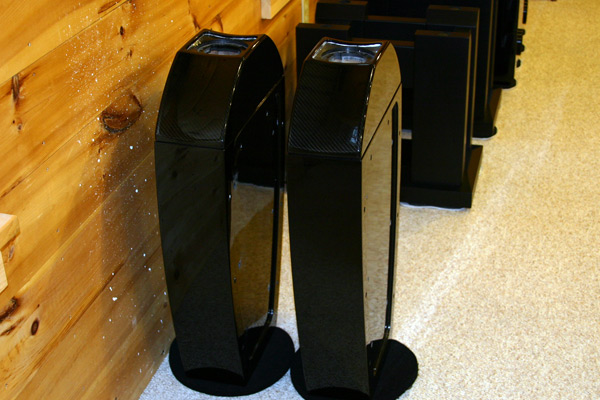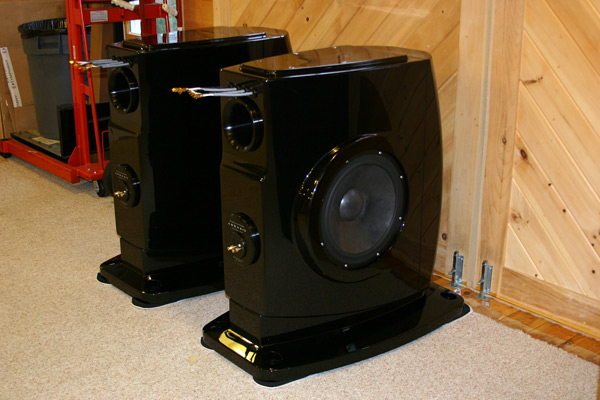 |
||||
| July 1, 2007 Searching for the Extreme: Andrew Payor of Rockport Technologies
In high-end audio, there are at least two fundamentally different philosophies concerning loudspeaker cabinet design. One camp equates the loudspeaker with a musical instrument, believing that it should resonate in a manner similar to that of a violin or guitar. Speaker and electronics manufacturer Audio Note, for instance, is a proponent of this approach. Perusing their website, I found this, in reference to their AN-E loudspeaker: "The cabinet is designed in such a way that it augments and supports the drivers in their task, not unlike the box of a guitar." The other camp regards anything not on the original recording -- i.e., sound produced, as opposed to reproduced, by the audio system -- as distortion. Ultimately, it’s hard to argue with this approach. In fact, the term high fidelity, according to Merriam-Webster Collegiate Dictionary, 11th ed., means "the reproduction of an effect (as sound or an image) that is very faithful to the original". Fidelity, from the Latin fidelus, actually means, literally, faithful. In my estimation, that gets to the heart of the matter: Is a stereo system’s goal simply to reproduce the input, or to also produce a sound of its own? I asked Andy Payor, owner of Rockport Technologies and an engineer who has seriously addressed in his own loudspeakers the problems of cabinet design, to help shed some light on the subject. My first question was to ask why cabinet resonances -- i.e., a speaker cabinet moving sympathetically in time with the musical input -- is, in his opinion, undesirable: "In an ideal loudspeaker, the combined acoustic output of the drive elements should be an exact analog of the input signal. While this is a lofty and, as yet, unachieved goal, it is still the target of serious loudspeaker designers. Any subtraction from or contribution to this ideal acoustic output is a form of distortion. Clearly, any cabinet resonant signature, which is frequency-specific, amplitude-variable, and released over time while contributing to the acoustic output of the drive-units, is going to corrupt the overall output of the loudspeaker." Obviously, Payor believes that his cabinets should be seen, not heard, while you listen to your music. In further conversations, he mentioned that a speaker cabinet should be stiff and have a high degree of damping. Payor accomplishes this goal in his Rockport speakers, he says, by using a composite molded construction (you can read more about this in my Rockport Technologies Factory Tour on SoundStage!). I asked him why, exactly, both stiffness and damping are important. "A properly designed loudspeaker cabinet should be as stiff as possible for several reasons: "First, to appropriately contain the rear wave of the drive-units -- the very reason the cabinet exists in the first place. "Second, to provide the best possible mounting surface for the drive-units so that the drive-units’ forces result in cone motion only, not additional motion of their mounting surfaces (with unknown phase relationships relative to the drive-unit) due to compliance in the cabinet structure. "Third, the stiffer a cabinet’s construction, the higher will be its frequency of resonance. Typically, there will be less excitation of a cabinet’s resonance (so it will be less noticeable) as frequency increases, due to the average spectral distribution of music, which has significantly greater energy in the lower octaves. "A loudspeaker’s cabinet structure (do not confuse with alignment) should also be as well damped as possible so that the amplitude at cabinet resonance is as low as possible, and dies off as quickly as possible over time when the excitation stimulus is removed. Again, the goal is to have as little cabinet contribution to the overall sound as possible. "It should be mentioned that a loudspeaker enclosure’s mass is also important, since additional mass (which should be accompanied by greater stiffness if the design is properly executed) will better resist excitation by the drive elements (Force = mass times acceleration)."
With the benefits of stiffness and damping thus laid out, the question then becomes how to achieve both simultaneously. According to Payor, it turns out that the ideal loudspeaker cabinet needs to be constructed of at least two materials, each optimized for either damping or stiffness: "Materials that exhibit high stiffness also exhibit high ‘Q’ (high amplitude over narrow bandwidth) resonant behavior, with very little internal loss mechanism. Well-damped materials, on the other hand, are those with significant internal losses and are generally more compliant, with lower-amplitude resonant characteristics. If we can agree that an ideal loudspeaker cabinet should be infinitely stiff as well as totally damped, then the design must exploit materials with dissimilar characteristics to achieve these dual goals. The art (science) lies in utilizing appropriate materials correctly to optimize both of these attributes, thereby improving the overall performance of the enclosure design." Many loudspeaker manufacturers build their cabinets of medium-density fiberboard (MDF), with varying results. I asked Payor how he accomplishes his design goals with MDF when his ideal of composite construction is too costly. "MDF certainly is the most widely utilized construction material for loudspeaker enclosures for a number of reasons. Its relatively low cost, coupled with good machining characteristics and moderate self-damping, make it a good choice. It is also compatible with most adhesives and sprayed coatings. The principle problem with MDF is that it is not as stiff as more exotic materials, and has a broader resonant characteristic that is difficult to control with typical extensional damping schemes. "Excellent performance can be attained, however, through careful manipulation of section geometry, extremely robust bracing, and proper utilization of constrained-mode damping strategies. When correctly executed, an MDF enclosure can fulfill the design goals of a very-high-performance loudspeaker, and even outperform designs that utilize exotic materials."
The term inert is often used by manufacturers and reviewers to describe loudspeaker cabinets. Whether or not a cabinet is inert is often determined by the old knuckle-rap test: Rap the cabinet with a knuckle and listen to the sound produced. A low thud is generally considered better than a loud, hollow bonk. But is inert the correct term, and is rapping on the cabinet scientifically relevant? "Inert is a correct term for a well-executed enclosure. Unfortunately, it is rarely an accurate term, even in highly touted and often very expensive designs. As far as a ‘knuckle-rap’ test is concerned, this can give you some valuable initial information when combined with an ear on the cabinet surface -- especially if you have done it to several hundred (or thousand) surfaces as a basis for comparison." With all of the attention Payor pays to addressing resonances in Rockport’s speaker cabinets, I wondered about the materials used to make the driver cones themselves; after all, they are supposed to produce the sound we actually hear. The latest Rockport speakers use carbon-fiber composite-sandwich cones designed by Payor himself. I asked him to give me a quick word about his new cone material and the thinking behind it, and about how driver breakup relates to resonances. "The carbon-fiber composite-sandwich cones that are used in the Altair and Arrakis share the same high-stiffness and high-damping design goals as the loudspeaker enclosures, but they are designed to be as light as possible. As a result, their behavior is nearly purely pistonic, even to well beyond their intended passband. In addition to being far stiffer for a given weight than any monolithic structure, their primary breakup modes (cone resonances) are extremely high in frequency, and well damped (low in amplitude) compared to all other materials, such as aluminum, magnesium, titanium, or ceramics."
Obviously, Andy Payor believes in designing and building loudspeakers whose cabinets and driver cones contribute to the music as little as possible of their own sound. One thing is clear: Rockport Technologies’ products definitely fall in the high fidelity camp. ...Jeff Fritz To learn more about Rockport Technologies’ products, please visit www.rockporttechnologies.com.
Ultra Audio is part of the SoundStage! Network. |



